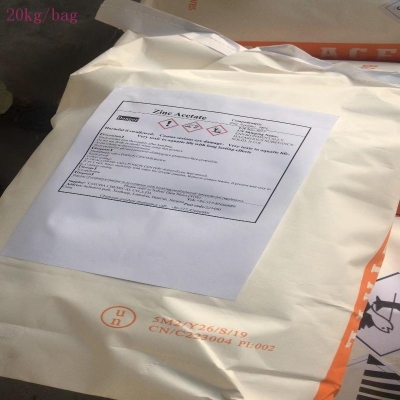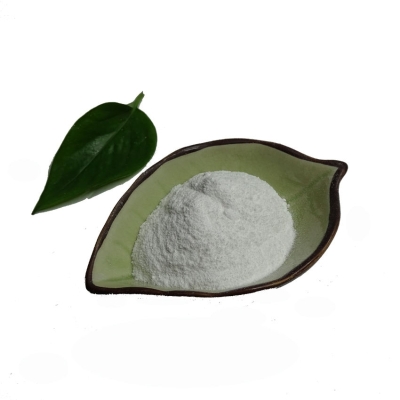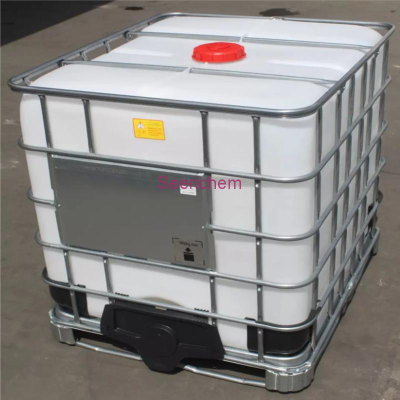-
Categories
-
Pharmaceutical Intermediates
-
Active Pharmaceutical Ingredients
-
Food Additives
- Industrial Coatings
- Agrochemicals
- Dyes and Pigments
- Surfactant
- Flavors and Fragrances
- Chemical Reagents
- Catalyst and Auxiliary
- Natural Products
- Inorganic Chemistry
-
Organic Chemistry
-
Biochemical Engineering
- Analytical Chemistry
-
Cosmetic Ingredient
- Water Treatment Chemical
-
Pharmaceutical Intermediates
Promotion
ECHEMI Mall
Wholesale
Weekly Price
Exhibition
News
-
Trade Service
On December 23, the Customs Tariff Commission of the State Council announced the "Notice on the 2017 Tariff Adjustment Program", deciding to abolish the export tariffs on fertilizers such as nitrogen and phosphate fertilizers, and appropriately reduce the export tariffs on ternary compound fertilizers.
In 2016, my country's fertilizer exports declined across the board.
From January to November 2016, my country's total urea exports were 8.
128 million tons, a year-on-year decrease of 31.
78%.
It can be judged that the total annual exports may be less than 9 million tons, which is much lower than the 13.
62 million tons and 1,375 in 2014 and 2015.
Million tons.
In terms of phosphate fertilizer, the export volume of monoammonium phosphate in my country from January to November 2016 was 1,876,200 tons, a decrease of 23.
53% compared to last year with 2,453,700 tons.
From January to November, my country's export volume of diammonium phosphate was 5,886,300 tons, which was 7,224,500 tons in the same period last year.
Compared with tons, it decreased by 18.
52%.
Compared with the overall growth in 2015, my country's fertilizer exports have entered a period of overall decline.
Looking back at this year's urea foreign trade, although the low quotation in the international market was derailed from the domestic market, there were still more than 4.
33 million tons of urea exports in the first five months.
In April, the first round of Indian bidding was 700,000 tons.
In May, the second round of Indian bidding confirmed that the transaction volume reached 900,000 tons, and my country’s contribution was 360,000 tons.
However, in the second half of the year, India’s Ministry of Fertilizers tendered 420,000 tons in July, and Iran’s 300,000 tons won the bid.
my country lost the list for the first time.
In August, the fourth round of bidding for 120,000 tons of urea by the Ministry of Fertilizers of India was still accepted by Iran.
Of the 1.
5 million tons of purchases in the fifth round of bidding in September, my country only received 310,000 tons of supplies.
We believe that my country's urea exports have dropped significantly this year, mainly due to the increased export capacity of Iran and other Middle Eastern countries.
The price has a clear competitive advantage over my country's urea export quotations.
At the same time, the global urea market released 10.
58 million tons of new capacity in 2016.
The annual planned new production capacity reached more than 9 million tons, which also promoted the decline of international urea prices.
The export cost pressure of domestic enterprises has been eased.
After the domestic resumption of the 13% value-added tax on fertilizer sales in September 2015, there was actually a phenomenon of repeated levies during export trade.
After the cancellation of the tariff, the situation in the international market remains unchanged, and export companies can get more The profit is 100 yuan/ton, and the cost pressure is alleviated.
At the same time, since the major urea exporting countries all use China's FOB price as the reference standard, they occupy the dominant position in the order, and after the tariff is cancelled, domestic enterprises have obtained a fair export opportunity.
Therefore, we expect the export situation of urea and phosphate fertilizer in 2017 to be better than this year.
It is optimistic that the rising trend of urea prices extends to spring plowing.
At present, small particles in Shandong have risen to about 1,540 yuan/ton, and the price of large particles is about 1,580 yuan/ton.
Affected by the smog weather across the country, the current domestic urea operating rate has dropped to about 43%, and the national single-day output has even increased.
Less than 120,000 tons.
According to data from Baichuan Information, as of now, it has determined to withdraw nearly 2 million tons of production capacity this year, with only 800,000 tons of newly added capacity, and 2 million tons of production capacity under long-term shutdown.
At present, there are 68.
02 million tons of domestic production installations, a decrease of 19.
55 percent from the 2015 production of 84.
55 million tons.
In terms of raw material coal, most coal companies’ quotations are still strong, and production is reduced at the end of the year.
High coal prices may continue until March 2017.
For downstream urea companies, they will still face the upside-down problem caused by high costs.
What has brought is that the parking urea companies that are less than the point of profit and loss will also postpone the resumption of production.
Therefore, we expect that the domestic urea market may be in short supply in the context of environmental protection factors leading to the continued decline in operating rates and the demand for spring ploughing next year.
We are optimistic that the price of urea will rise to the range of 1,700-1,800 yuan/ton in the first quarter of next year.
Rising costs and joint production restrictions within the industry have pushed up the price of phosphate fertilizers.
The current mainstream ex-factory price of 55% of monoammonium phosphate in Southwest China is 1,950-2,000 yuan/ton, an increase of 21% from the previous month; the current price of 64% diammonium phosphate in Southwest China has been increased to 2,550-2,600 yuan/ton in Heilongjiang , There has also been a clear upward trend recently.
In early December, the “6+2” meeting of phosphate fertilizer companies in the industry reached a consensus on collective production restrictions and joint price adjustments.
The companies agreed to reduce the start-up by about 30% in a one-year cycle to alleviate the pressure of overcapacity.
In terms of raw materials, the current mainstream market price of sulfur in the Yangtze River port is around 900 yuan/ton, which has risen close to 200 yuan/ton from the low price in August; and the recent environmental inspections of synthetic ammonia companies in some areas have caused production to stop, limit production, and synthetic ammonia.
The price in Hubei has risen from 2,050 yuan/ton in early October to 2,700 yuan/ton, while the price of synthetic ammonia in Yunnan has reached more than 3,300 yuan/ton.
At present, the cost of 55% powdered diammonium has risen by about 500 yuan, and the full production cost has been close to 2,200 yuan/ton.
We believe that with the cancellation of phosphate fertilizer export tariffs in 2017, the situation of phosphate fertilizer exports may improve next year.
If domestic phosphate fertilizer companies can determine to implement the decision to limit production, DAP is expected to continue to rise before spring plowing next year.
Investment Advice.
In terms of urea, we focus on recommending Hualu Hengsheng, which has a production capacity of 1.
8 million tons and advanced coal-water slurry gasification technology, and Hubei Yihua and Yangmei Chemical, which have a production capacity of 3.
31 million tons and 5.
5 million tons, respectively.
The price of urea rises by 100 In terms of phosphate fertilizer, we mainly recommend the domestic phosphate fertilizer leader, Yuntianhua, which has a combined production capacity of 4.
8 million tons of monoammonium phosphate and diammonium phosphate, and has an increase of 0.
12 yuan, 0.
26 yuan and 0.
08 yuan respectively (assuming the actual income tax rate).
Hubei Yihua, which has a production capacity of 1.
32 million tons of diammonium phosphate, will increase the price of monoammonium phosphate and diammonium phosphate by 100 yuan, and EPS will increase by 0.
27 yuan and 0.
11 yuan respectively.
In 2016, my country's fertilizer exports declined across the board.
From January to November 2016, my country's total urea exports were 8.
128 million tons, a year-on-year decrease of 31.
78%.
It can be judged that the total annual exports may be less than 9 million tons, which is much lower than the 13.
62 million tons and 1,375 in 2014 and 2015.
Million tons.
In terms of phosphate fertilizer, the export volume of monoammonium phosphate in my country from January to November 2016 was 1,876,200 tons, a decrease of 23.
53% compared to last year with 2,453,700 tons.
From January to November, my country's export volume of diammonium phosphate was 5,886,300 tons, which was 7,224,500 tons in the same period last year.
Compared with tons, it decreased by 18.
52%.
Compared with the overall growth in 2015, my country's fertilizer exports have entered a period of overall decline.
Looking back at this year's urea foreign trade, although the low quotation in the international market was derailed from the domestic market, there were still more than 4.
33 million tons of urea exports in the first five months.
In April, the first round of Indian bidding was 700,000 tons.
In May, the second round of Indian bidding confirmed that the transaction volume reached 900,000 tons, and my country’s contribution was 360,000 tons.
However, in the second half of the year, India’s Ministry of Fertilizers tendered 420,000 tons in July, and Iran’s 300,000 tons won the bid.
my country lost the list for the first time.
In August, the fourth round of bidding for 120,000 tons of urea by the Ministry of Fertilizers of India was still accepted by Iran.
Of the 1.
5 million tons of purchases in the fifth round of bidding in September, my country only received 310,000 tons of supplies.
We believe that my country's urea exports have dropped significantly this year, mainly due to the increased export capacity of Iran and other Middle Eastern countries.
The price has a clear competitive advantage over my country's urea export quotations.
At the same time, the global urea market released 10.
58 million tons of new capacity in 2016.
The annual planned new production capacity reached more than 9 million tons, which also promoted the decline of international urea prices.
The export cost pressure of domestic enterprises has been eased.
After the domestic resumption of the 13% value-added tax on fertilizer sales in September 2015, there was actually a phenomenon of repeated levies during export trade.
After the cancellation of the tariff, the situation in the international market remains unchanged, and export companies can get more The profit is 100 yuan/ton, and the cost pressure is alleviated.
At the same time, since the major urea exporting countries all use China's FOB price as the reference standard, they occupy the dominant position in the order, and after the tariff is cancelled, domestic enterprises have obtained a fair export opportunity.
Therefore, we expect the export situation of urea and phosphate fertilizer in 2017 to be better than this year.
It is optimistic that the rising trend of urea prices extends to spring plowing.
At present, small particles in Shandong have risen to about 1,540 yuan/ton, and the price of large particles is about 1,580 yuan/ton.
Affected by the smog weather across the country, the current domestic urea operating rate has dropped to about 43%, and the national single-day output has even increased.
Less than 120,000 tons.
According to data from Baichuan Information, as of now, it has determined to withdraw nearly 2 million tons of production capacity this year, with only 800,000 tons of newly added capacity, and 2 million tons of production capacity under long-term shutdown.
At present, there are 68.
02 million tons of domestic production installations, a decrease of 19.
55 percent from the 2015 production of 84.
55 million tons.
In terms of raw material coal, most coal companies’ quotations are still strong, and production is reduced at the end of the year.
High coal prices may continue until March 2017.
For downstream urea companies, they will still face the upside-down problem caused by high costs.
What has brought is that the parking urea companies that are less than the point of profit and loss will also postpone the resumption of production.
Therefore, we expect that the domestic urea market may be in short supply in the context of environmental protection factors leading to the continued decline in operating rates and the demand for spring ploughing next year.
We are optimistic that the price of urea will rise to the range of 1,700-1,800 yuan/ton in the first quarter of next year.
Rising costs and joint production restrictions within the industry have pushed up the price of phosphate fertilizers.
The current mainstream ex-factory price of 55% of monoammonium phosphate in Southwest China is 1,950-2,000 yuan/ton, an increase of 21% from the previous month; the current price of 64% diammonium phosphate in Southwest China has been increased to 2,550-2,600 yuan/ton in Heilongjiang , There has also been a clear upward trend recently.
In early December, the “6+2” meeting of phosphate fertilizer companies in the industry reached a consensus on collective production restrictions and joint price adjustments.
The companies agreed to reduce the start-up by about 30% in a one-year cycle to alleviate the pressure of overcapacity.
In terms of raw materials, the current mainstream market price of sulfur in the Yangtze River port is around 900 yuan/ton, which has risen close to 200 yuan/ton from the low price in August; and the recent environmental inspections of synthetic ammonia companies in some areas have caused production to stop, limit production, and synthetic ammonia.
The price in Hubei has risen from 2,050 yuan/ton in early October to 2,700 yuan/ton, while the price of synthetic ammonia in Yunnan has reached more than 3,300 yuan/ton.
At present, the cost of 55% powdered diammonium has risen by about 500 yuan, and the full production cost has been close to 2,200 yuan/ton.
We believe that with the cancellation of phosphate fertilizer export tariffs in 2017, the situation of phosphate fertilizer exports may improve next year.
If domestic phosphate fertilizer companies can determine to implement the decision to limit production, DAP is expected to continue to rise before spring plowing next year.
Investment Advice.
In terms of urea, we focus on recommending Hualu Hengsheng, which has a production capacity of 1.
8 million tons and advanced coal-water slurry gasification technology, and Hubei Yihua and Yangmei Chemical, which have a production capacity of 3.
31 million tons and 5.
5 million tons, respectively.
The price of urea rises by 100 In terms of phosphate fertilizer, we mainly recommend the domestic phosphate fertilizer leader, Yuntianhua, which has a combined production capacity of 4.
8 million tons of monoammonium phosphate and diammonium phosphate, and has an increase of 0.
12 yuan, 0.
26 yuan and 0.
08 yuan respectively (assuming the actual income tax rate).
Hubei Yihua, which has a production capacity of 1.
32 million tons of diammonium phosphate, will increase the price of monoammonium phosphate and diammonium phosphate by 100 yuan, and EPS will increase by 0.
27 yuan and 0.
11 yuan respectively.







